Prevalence of neck pain disorders has been rising in the last 28 years especially in economically more developed regions such as Europe. It is affecting working population and presenting a significant cause of absenteeism and presenteeism. More importantly its prevalence is increasing in younger population due to changes in modern lifestyle and increased use of modern mobile devices. Its burden on health care system and society is not solely the result of acute episodes but rather its chronicity and high reoccurrences. Increase in number of patients with neck pain suggests that more efficient rehabilitation approaches need to be developed in order to better control this widely spread musculoskeletal condition.
To-date research suggests that underlying sensorimotor mechanisms such as kinaesthetic awareness should be addressed in neck pain rehabilitation, besides commonly assessed subjective outcome measures such as pain intensity level, disability, and presence of different symptoms. Studies are suggesting that cervicocephalic kinaesthetic training shows promising results in alleviating symptoms, functional deficits and prevents recurrence. However, approximately one third of patients doesn’t report improvements which is suggested to be due to the heterogeneity of neck pain pathology and lack of individualised approaches in rehabilitation. High heterogeneity of patients with idiopathic neck pain is also suggested by the plethora of symptoms reported by patients as well as conflicting results from kinaesthetic awareness measurements reported by different studies, which has been suggested to be a result of different patient recruitment methods rather than methodological issues. Therefore, it would be of importance to search for clusters of patients with idiopathic neck pain to better understand different needs that have to be addressed in this patient population and consequently prepare more efficient rehabilitation protocols.
Effectiveness of kinaesthetic training has been well documented in patients with idiopathic neck pain. Four-week interventions have beneficial effects, that last for longer than three months. However, studies report that in addition to one third of patients that don’t respond to kinaesthetic training there is additional twenty percent patient dropout usually observed. Basic studies on sensorimotor functions of the cervical spine have reported an important influence of amplitude and velocity of head and neck movements during kinaesthetic movement tasks, which with addition of other described rationales suggests, that kinaesthetic training should be adjusted to patient needs. Therefore objectives of this research project are; (i) to search for clusters of patients with idiopathic neck pain based on multidimensional data from cervicocephalic kinaesthetic awareness tests using different data mining algorithms and identify cluster specific kinaesthetic awareness deficits, (ii) develop a machine learning classification model in order to identify in which clusters patients with idiopathic neck pain are classified to, (iii) assess effects of kinaesthetic training approaches that are adjusted according to cluster specific deficits in kinaesthetic awareness on other sensorimotor functions such as eye movement control and subjective symptoms and (iv) to study whether such approach can decrease reoccurrence and chronicity in patients with idiopathic neck pain. The proposed research project will be performed in two phases, in the first phase clustering of idiopathic neck pain patients will be performed and in the second phase effectiveness of kinaesthetic training on above mentioned outcome measures and reoccurrence of neck pain will be studied.
Our results will be presented to different interested communities such as orthopaedic surgeons, physical medicine and rehabilitations doctors, physical therapists and kinesiologists via meetings, congresses, and peer-reviewed papers.
More informations at the https://cris.cobiss.net/ecris/si/sl/researcher/41577














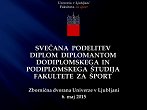
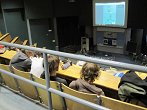
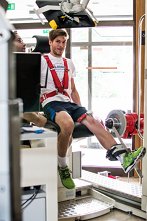










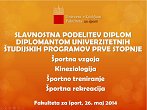

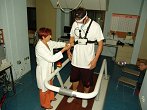





.png)